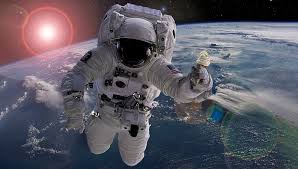Introduction
On the 20th of July 1969, for the first time in the history of space technology, Apollo 11 successfully landed on the lunar surface. After such a successful landing, many countries and organizations have used the same technology. For instance, this technology was used by the Luna 9 spacecraft[1] which was launched and successfully landed on many extra-terrestrial surfaces by the Soviet Union.
While the idea of patents is not predominant in the space sector, compared to other manufacturers such as transportation, electronics, fast-moving consumer goods, chemical industry, pharmaceutical industry, etc.- in recent years, space patents have become increasingly crucial and into the center stage. According to the OECD[4], space patents at the global platform have almost quadrupled between the phase of 1991 and 2011. In the race for international influence, which helps a country to gain recognition and power in the field of Intellectual property and innovation in space, Canada is ahead of all the other countries comparing to its size, geographically, which is a signal of the potential that can be used to the technological advantage of the space sector in Canada. However, while space patents have shown immense potential, patenting space technologies presents some complications that are not so often encountered in more terrestrial areas of technology.
It is an extremely difficult task to measure or quantify innovation. There is no fixed or official indicator or test for innovation measurement. However, in the field of space patents, the annual production of patents is the principal and basic indicator for the quantification of innovation. This has led to the high need for protecting space inventions and work towards harmonizing space law with IP rights. The establishment of IP rights for space inventions, as it is a strong tool for the inventors to protect their inventions, will accelerate the formation of rights, breaking the boundaries of the conventional territory. Such protection will help the owner to claim the right over their inventions whenever the inventions are been exploited in space.
One of the most recent Patents, is by India in September 2019, when Chandrayan – 2 the lunar project tragically failed. Resurging in May 2020, the Indian Space Research Organisation intrigued the world community, when it announced a highly advanced patent[5] for protecting the unique and exclusive method and technique of manufacturing a simulant of highland lunar soil.
Cost-effective
Reproducible
Highly scalable
Maria or Mare, which are flat areas in most cases, are the dark areas on the lunar surface. The high-altitude areas are mountainous and craterous. These areas comprise 83% of the lunar surface. The patent claim of the ISRO claims that while simulants produced and created by most of the countries represent this Lunar Mare region, the soil produced by ISRO can incorporate the fragmental regolith on the lunar surface.
In this newly explored area of regolith, the deepening of knowledge will help in the further study of the geotechnical and mechanical properties of lunar soil. ISRO has been extensively filing patents since 1973, till now ISRO database shows the number of around 270 patents, 45 copyrights, and 10 trademarks in the IP portfolio of the Indian Space agency. The creation of space laws and the space patents under IP rights are fundamentally clashing, which has led to many issues in the enforcement, questioning whether the territorial jurisdiction under intellectual property law permits the extension of each national (or regional) law to the objects which the respective country has registered and launched into outer space. Patent rights have the objective of preventing the use of the technology by any of the innovators or consumers. The space laws and the fundamental principles, “province of all mankind’, ‘common heritage of mankind’ and benefit of all countries promote the concept of shared benefit. The lunar soil patent of India’s ISRO will help India promising prospects for future missions to ensure a soft landing on the highland region.
NASA’s declassified patent of the creation of an artificial Sun
The patents in space are an emerging and highly competitive market in their scope and potential. Experiments, ideas, innovations, and inventions carried out in the field of patents and intellectual property rights in space are encouraging and boosting the urge and need for patent protection. Every innovation comes with its price in this business and creativity-driven world. Patent protection in the field of space technologies and the space sector is extremely important when it comes to its extensive usage and role. The patent protection in hand is an asset for an individual, organization, or country. With the multiplication in the patent protection of the space technology innovations, the income and monopoly come in which creates a space for the innovator to gain some profits, name, and explosibility. The patent in space is an important and crucial tool that protects the innovators’ innovativeness. The innovation can be misused by using the same innovation, which is born out of the mind of an individual and his/her intellect, and unethically using it for monetary and other benefits such are the recognition out of such inventions.
Image Source
Author: Saptak Pandya, The Maharaja Sayajirao University of Baroda
[1] BBC ON THIS DAY | 3 | 1966: Soviets land probe on Moon
[2] Chandrayaan-3 to be launched in first half of 2021: Govt | Technology News,The Indian Express
[3] Chandrayaan-3: India plans third Moon mission – BBC News
[4] The Space Economy at a Glance 2014 | en | OECD
[5] Made in India ‘moon soil’: ISRO gets patent | Hindustan Times
[6] The Most Expensive Failed Space Missions Of All Time (businessinsider.com)
[7] The Most Expensive Failed Space Missions Of All Time (businessinsider.com)


